A misty Monday morning brought us back up to the Harbour Cone reserve on the Otago Peninsula. I hadn’t been here since my epic field trip searching for signs of Dunedin’s early settlers. But this reserve is so chock-full of historic remains that even that huge effort couldn’t cover everything. Our plan for today was to walk down from Highcliff Rd to Hoopers Inlet and back up again…and if we happened to discover some more relics from the past, so much the better!
 We accessed Highcliff Rd via Portobello as a section between Sandymount and Dunedin is still closed after the floods seven months ago.
We accessed Highcliff Rd via Portobello as a section between Sandymount and Dunedin is still closed after the floods seven months ago.
We passed by Harbour Cone and climbed onto the hill to the south, where the landscape is practically covered with the relics of the Peninsula’s first European inhabitants. On my previous adventure I’d looked down on the area from the slopes of Harbour Cone, from which these signs can be clearly seen – at least on days when the hills aren’t shrouded in mist.
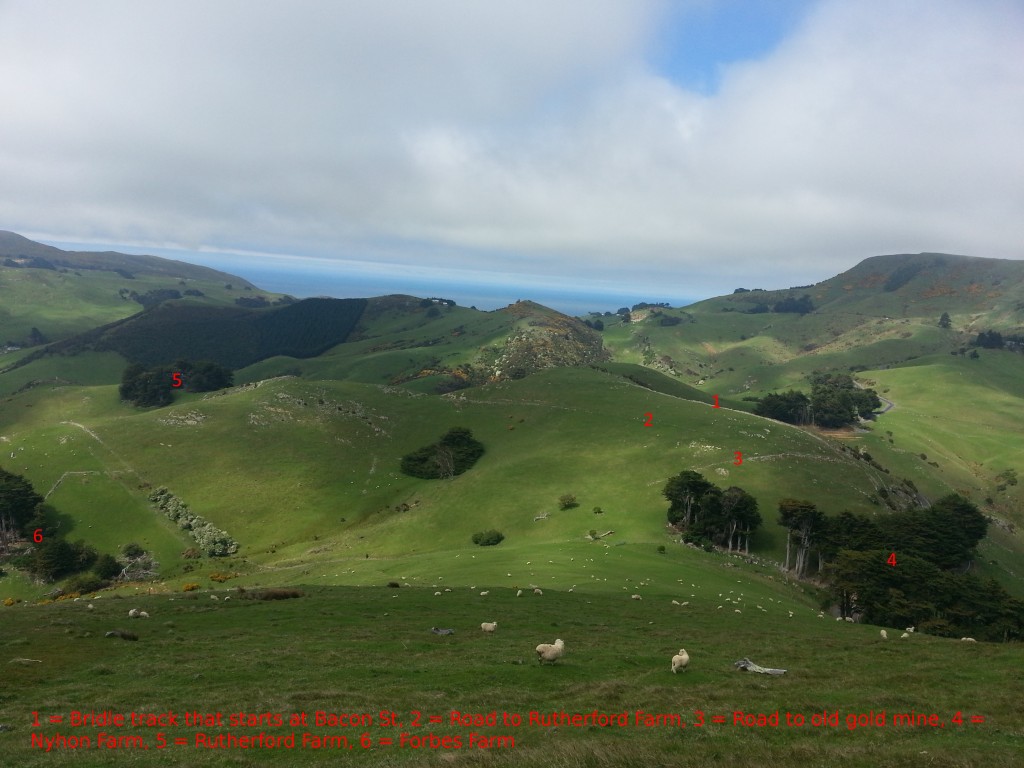
The downside of being amongst all these early roads is that it can be hard to tell if you’re following the current track or an old road that no longer goes anywhere. We put our trust in some yellow-capped marker posts which led us down Rutherford’s Road.
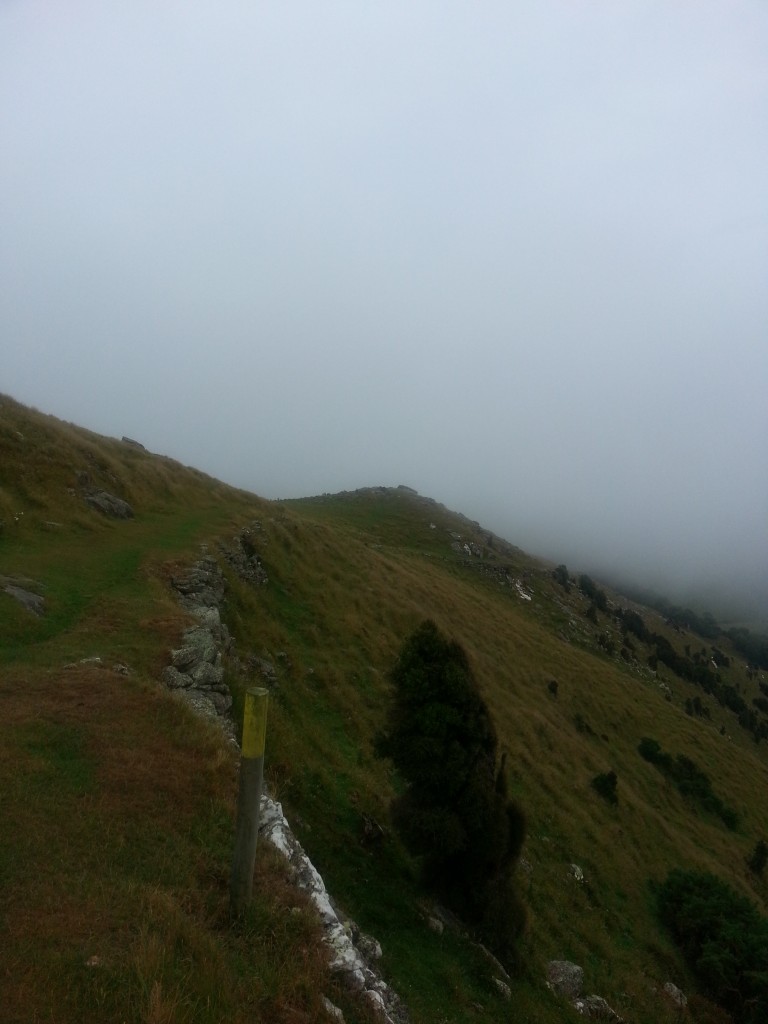
The old road was cut straight into the stone in places – an immense effort taken to build this track to a homestead that has long been abandoned.
We reached a large square stand of macrocarpas and I was intrigued to see that they were surrounded by what appeared to be a collapsed dry stone wall.
“You want to look in there, don’t you?” Dad noticed.
That was all the permission I needed. I scrambled over the stones and into the grove.
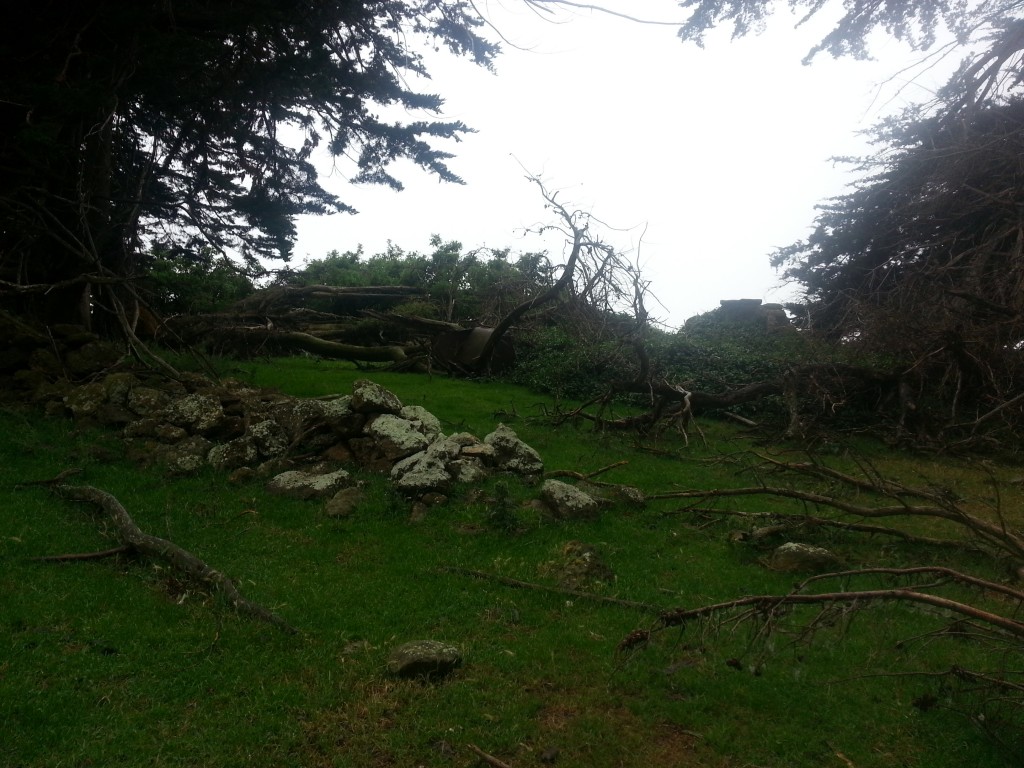
Under the trees I quickly spotted an overgrown masonry wall which brought me in mind of the ruin of the Allan farmstead I’d already visited on the slope of Harbour Cone. This, perhaps, is what remains of the Rutherford family dwelling.

Behind the masonry wall is a complicated network of dry stone walling. There’s even a little window in one of the walls. Possibly these are the remains of a cattle byre or yards.

Being the nerd that I am, I couldn’t help but put my detective hat on. Who lived here? It’s marked on the 1901 map as being Rutherford’s Farm, and the old newspapers refer to the family of James Ritchie Rutherford who lived at a place called “Lilybank” on Sandymount. Could this be the ruin of Lilybank?
Finally I found a reference to “Mr J. R. Rutherford, of block 2, section 3 of 66, Otago Peninsula, at the back of the Harbour Cone”. Bingo!
I should take this moment to point out that I’m not a trained historian or genealogist, so any of my conclusions could be wildly wrong. You should take what follows with a grain of salt, and do your own research if you want to be sure of accuracy.
James Ritchie Rutherford was born in Scotland. His father Andrew was a school headmaster in Lundie. He had at least two, probably three brothers, one of whom ended up in Bendigo, Australia. His family also had a general servant when the Scotland Census was performed in 1841. Andrew was absent, likely recently deceased as his will was proved in August 1841.
I don’t know when he came to New Zealand, but he was here by May 1867 when he married Janet Torrance Drew, the daughter of John Drew of Elgin Cottage, Cumberland St.
Their first son, named John Drew Rutherford after his grandfather, was born the following year. He would marry an Oamaru girl, Agnes Pringle, in 1905. He owned a farm called Lundie Braes in Duntroon, which was interestingly put forward for Century Farm status in 2006, having now been owned by John and his descendants for over 100 years.
In 1869 a second child, Andrew Rutherford, was born. Sadly, he only lived seventeen months. Walter Riddell, a neighbour, made a “little coffin” and the child was buried at Andersons Bay Cemetery.
Their third son, Stephen Ellis Rutherford, arrived in 1871 (Interestingly, a nearby farmer by name of Stephen Ellis had a son named James Rutherford Ellis, almost as if they went swapsies on the names!). Stephen would pass away in 1896 at the age of 25 and be buried in the family plot. His occupation was listed as shop assistant.
In 1872 a fourth son arrived, and was named William James Drew Rutherford. Tragedy struck the family once again and this child lived only two and a half years before joining his older brother in the plot at Andersons Bay Cemetary. In total, James and Janet Rutherford would bury three sons.
Things were slightly happier in 1874 when their fifth son, David, was born. He escaped the curse of the male Rutherford children and outlived his parents, dying at the age of 76.
In 1876 the Rutherfords celebrated the arrival of their first daughter, Elizabeth Thomson Rutherford, who was known as Bessie. Bessie would marry Matthew Little of Dunedin at about the age of 28.
Their final child, Jane Morrison Rutherford, arrived in 1880. Jane never married and would die in Portobello at the age of 67.
The children attended Sandymount school, which was the brainchild of the aforementioned Walter Riddell, and James was on the committee in 1883. There was some drama in this committee in 1894, with James interpreting an education act in a way that prevented some householders from presenting their preferred nominations for the committee. The meeting broke up under a “very angry aspect”.
James was a shareholder in the ill-fated Harbour Cone cheese factory which I mentioned in my earlier post. The factory was destroyed in the bush fire of 1881 and would have been quite a blow for the local community.
In February 1887 a violent north-westerly gale assaulted the Peninsula, and lifted the roof off a large cattle byre belonging to the family. For all we know, that byre could be part of the dry stone walls we saw at the site.
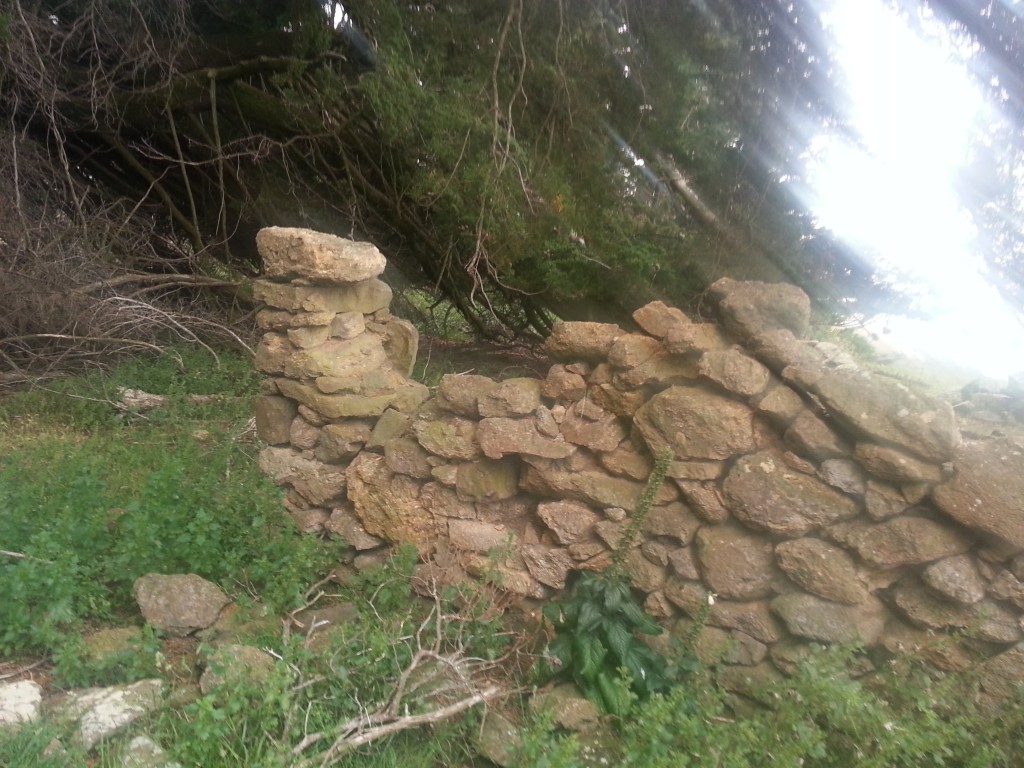
Janet Torrance Rutherford passed away suddenly on 11 April 1906. Two years later, her grieving husband placed the following poem in the newspaper:
Two long years and oh! how lonely.
Friends may think the wound is healed,
But they little know the sadness
Deep within our hearts concealed.
James himself passed away at Elgin House in Portobello at the age of 89 years. This was said to be his son’s residence, presumably David’s since John had the farm at Duntroon.
Once we’d investigated to our hearts’ content, we decided to push on with our attempt to reach Hoopers inlet. Wandering around we eventually found some marker posts heading down into the valley of Stewarts Creek, towards a small patch of bush.

We reached the lowest marker and looked around hopefully. We couldn’t see any more markers, nor could we see a path through the bush. After wandering around for a while, we shrugged and returned the way we came.
We once again reached the hill of many roads and continued along the ridge, where I spotted another exciting feature in the valley below.
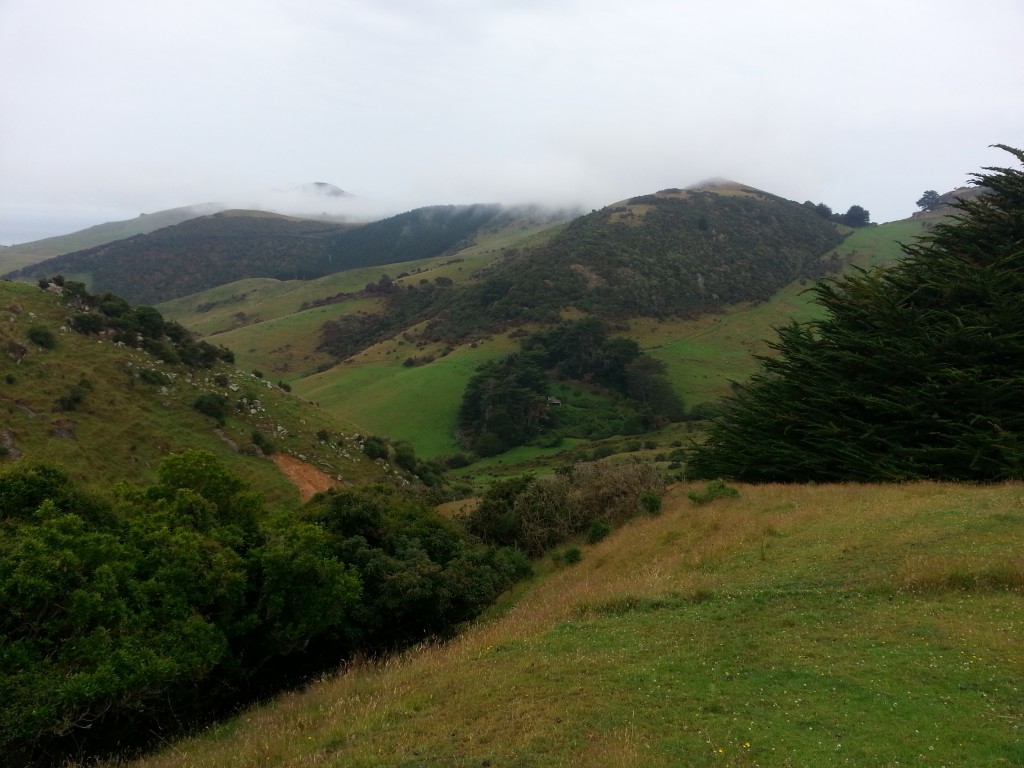
Do you see it? Okay, how about now:
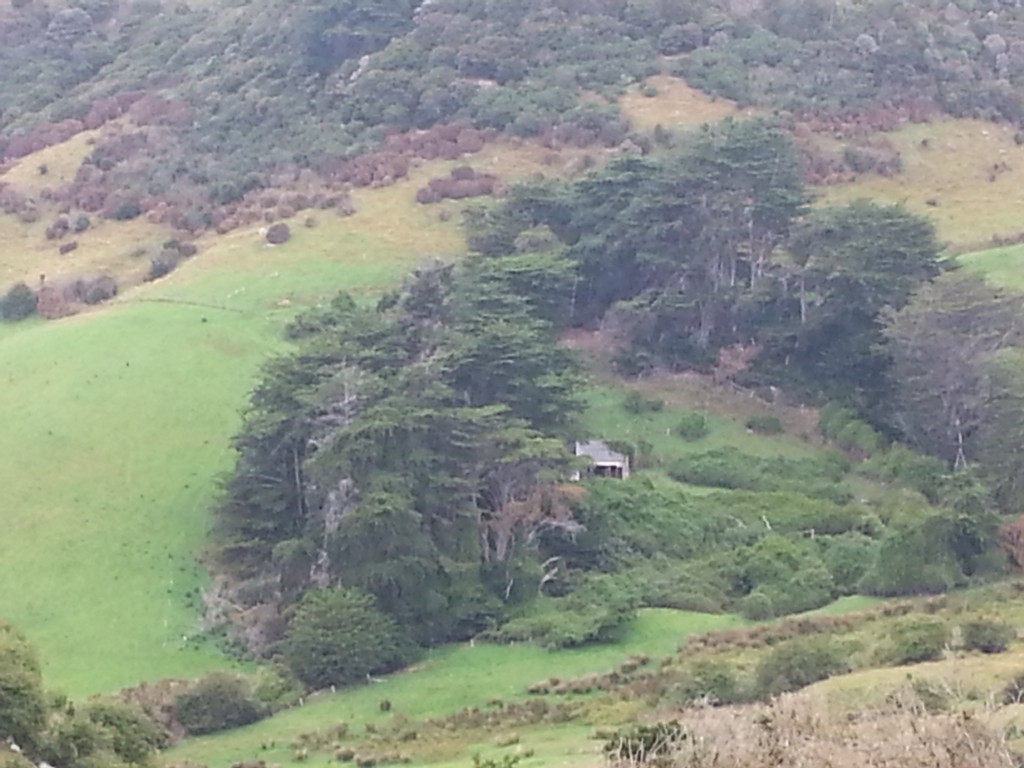
This is the Stewart Farm, reputed to be one of the best ruins in the reserve. I was aching to visit it, but my legs were also aching and we still couldn’t figure out how to get down. We vowed to investigate further another day.
Once we reached the car, I checked my map of the Harbour Cone area. It did indeed show the walking track heading through the bush where we got stuck. Go figure.
Despite our disappointment in not achieving our goal, I was happy to have discovered something new. One thing I enjoy about researching local history is remembering people who otherwise might be forgotten. To me, the Rutherford family, with their difficult life on this small inhospitable patch of ground, is as much an integral part of Dunedin’s story as the famous Cargills or Larnachs.
References:
BIRTHS, MARRIAGES, AND DEATHS. Otago Daily Times , 27 April 1906, Page 4
MARRIED. Otago Witness , Issue 805, 4 May 1867, Page 11
DEATH. Otago Daily Times , Issue 2679, 7 September 1870, Page 2
MARRIAGES. Otago Witness, Volume 21, Issue 2636, 21 September 1904, Page 47
MARRIAGES. Otago Witness , Issue 2676, 28 June 1905, Page 48
SANDYMOUNT. Otago Witness , Issue 2097, 3 May 1894, Page 23
IN MEMORIAM. Otago Daily Times , Issue 14186, 11 April 1908, Page 8
Eion Ritchie Rutherford – Lundie Braes (Duntroon)
Dunedin City Council Cemeteries Search
DEATHS. Evening Star , Issue 17080, 26 June 1919, Page 4
BROAD BAY. Otago Witness , Issue 1838, 11 February 1887, Page 17
LOCAL & GENERAL. Otago Witness , Issue 1829, 10 December 1886, Page 9
DEATHS. Otago Daily Times , Issue 12260, 25 January 1902, Page 6
Will of Andrew Rutherford, Schoolmaster of Lundie , Angus. PROB 11/1950/291. The National Archives.
HARBOUR CONE CHEESE FACTORY, PENINSULA. Otago Daily Times , Issue 5301, 14 February 1879, Page 7
Births, Deaths & Marriages Online
Walter Riddells diary, aged 28 years, Sandymount, Otago Peninsula. by Walter Riddell
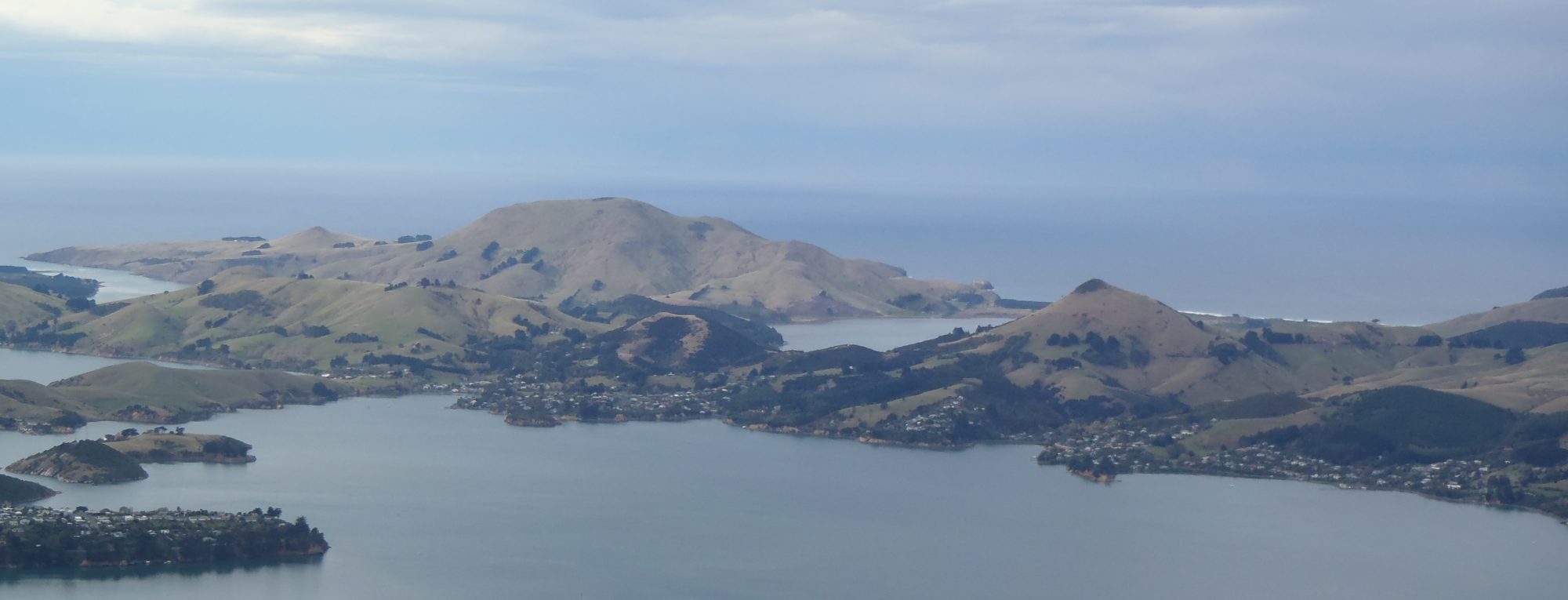
Thank you for this bit of early history. My father George Murray owns a farm on Hoopers inlet over through Sandymount. Our farm started with my great grandfather. Dad attended Sandymount school and could share some history with you I’m sure on the history of otago Peninsula. 🙂
Hi Catherine, that would be fantastic!
Hi Catherine – I came across the Rutherford’s Ruin article and as I have been searching for information about Peter & Margaret Murray who arrived on the ‘Auckland’ in 1874 I thought I would enquire to see if you had information about little George’s [c1874] brother Peter born c 1863, of his movements, marriage and so on and whether he farmed the Sandymount property. My great grandfather was Alexander Cruickshank Murray [Peter snr’s brother] who accidentally died on the Portobello Road in 1919.
Of interest: George died on 22 March, 1942, age 66. He married Eliza Murray, born 1884, in 1902. She died on 13 January, 1960, age 76 years at Hooper’s Inlet. A son, William, died on 20 December, 1908, age 17 days. They are buried together at Hooper’s Inlet, Portobello. George and Eliza were actually cousins. George was the son of Peter while Eliza was the eldest daughter of Peter’s brother, Alexander Cruickshank and his wife Annabella..
Thanks David
The old ruin that you talk of being the Stewart farm, is indeed the Stewart farm. My father was born there. The farm belonged to his parents. Dad and his siblings went to Sandymount school. Dad farmed the land after his father. He also bought the adjacent property from Sandy Rodgers and me and my siblings were brought up in the house on that farm. Prior to that, mum and dad lived in the Riddell house next to the school. My oldest brother, Graham just missed starting school at Sandymount as it closed, so he had to go to Portobello school, as did all 4 of us. My father sold the farm to the prior owners before the DCC purchased it in the late 19 70’s. I have recently visited our old house, and I am severely disappointed at the derelict condition of it!!!! However, the house below, which we have always referred to as “down home ” was partially demolished by I think one of my brothers. I do remember the house complete and dad used to store hay in it, as the paddock in front was called “the hay paddock”. There is an immense amount of knowledge of the area able to be sourced from living people as many of us are very much still alive.
Hi Julie! I’d love to get in contact with you in a few weeks to find out more about the Stewart Farm. I’d like to do a full article on it.
I really like these historical forays of yours; there’s something quite special about the tangible evidence of the lives of those who went before. I hope you make it back someday and investigate Stewart farm!
We plan to! We just have to find the way down!
How wonderful to stumble upon this! James Ritchie Rutherford is my great, great grandfather – I went up to Sandymount for an explore but couldn’t work out where the homestead would have been. Thanks for the information!!
Hi Victoria, I hope this helps you find the homestead next time you head out there! If you have any further information about James or his children, please let me know!
thanks for the most interesting detail re this Larnach farm as we have connections on this area
Edward
Hi, I just stumbled upon this and it’s so interesting!! From what I can figure, James Ritchie Rutherford is my great great great grandfather, and John Drew Rutherford my great great grandfather. I actually live in Duntroon on Lundie Braes farm, and my grandparents have visited Lundie numerous times in their travels, which I hope to do one day! I am now at school in Dunedin so I will have to go on a hunt for the Homestead! Thank you very much for putting your detective hat on!
Hi Isabelle, that’s really cool that you live on the Lundie Brae farm, keeping the link between your family and Lundie in Scotland alive! I hope you do find the old homestead, it’s a fascinating place and I’m glad my story helped you!
I love reading your adventures. Having Rutherford as my maiden name I am always fascinated and interested to find out if there is any link to my Rutherford ancestors. I think I will have to go on this walk at some stage. We are so very lucky to have tye beautiful areas to walk and discover here and so close to our city.
Enjoyed reading your writings and the photos. I remember visiting the farm where great Uncle David and Great Auntie Jane lived at Portobello. The house had a huge macrocarpa hedge with a cut out arch over the gate. My father was John Pringle Rutherford eldest son of John Drew. I remember being quite upset when Grandad died. We lived at Fuchsia Creek farm , Five Forks district Oamaru. I am Lesley Agnes , brother John Christie, sister Margaret Ann and Kenneth David Rutherford.
Would love to find out how you identified the blocks of land I am trying to find out more about Stephen Ellis and family and how the family arrived and settled there
I don’t know where to look
Hi, I’m James Chalmers Ritchie Rutherford, son of James Ritchie Rutherford, the second son of John Drew and Agnes Pringle.
Chalmers comes from my mother’s (Hilda Lockerbie) family. Her father was James Chalmers Lockerbie. They lived in St Johns Town of Dalry in southwest Scotland.
I live in Queenstown, NZ.
We are going to Europe this coming July 2023 for my daughter’s wedding, she is Heather Lockerbie Rutherford. While there I’m hoping to get to Scotland and visit Lundie and Coupar Angus.
Hi, this is Ritchie Rutherford again. Is now August 2023 and my wife Cherie and I are in Leeds, England staying with Cherie’s son Tom and his fiancee Tania. Yesterday I got back from a trip to Scotland in a rental car. Was an interesting 2 days. Before visiting Lundie I went to a place on the south side of the Tweed River between Kelso and Melrose in Roxburghshire. There was a place name Rutherford on google maps there. Turns out this place could be the origin of the Rutherford name for 2 or 3 reasons;
Rutherford is a Scottish border clan name. The name comes from a place-name in Roxburghshire on the south bank of the river Tweed, midway between Melrose and Kelso. A village there, then called Rothersfurth, was burnt and razed by an English army in 1545 and has disappeared from the map.
The origin of the Rutherford name is thought to have been the Old English “rother” meaning “cattle” and “ford”, “a river crossing.”
Or according to another theory, the name can be traced back to the West Flemish name Ruddervoorde, a community now part of Oostkamp.[2]
Another theory of the origin of the name states that a man by the name Ruther carried an ancient king of Scots over the River Tweed. Eventually, a descendant of the king gave land to the family that carried his forefather over the river and when surnames were adopted, Rutherford came into being.
Or, the other tradition states that an English army foolishly abandoned a strong position on the heights above the River Tweed, attacking a Scottish force on the opposite side.[3] The English, attempting to force a crossing were soundly defeated and the Scots named the place “Rue the Ford” in commemoration. Whether this story was true or not the English certainly came to rue the Rutherfords who were fierce in their defence of their lands and eager to plunder the rich pickings of the Northumbrians.
There is a farm there owned by Rutherfords who are probably descendants of the originals.
Whether there is a connection between these Rutherfords and the Lundie Rutherfords (my ancestors) and the Otago Peninsular/Lundie Braes family I haven’t found it yet.
In Lundie I went to the old church, recently burnt down and found the headstone for John Rutherford, son of Andrew Rutherford.
I also spent time with the Meikle family who have farmed there all their lives and know a lot of Lundie history.
We soon will be going to my daughter Heather’s wedding to Daniel in Tuscany, Italy. They live in London.